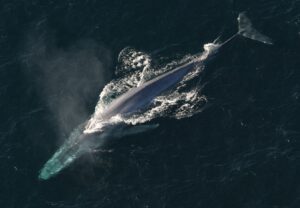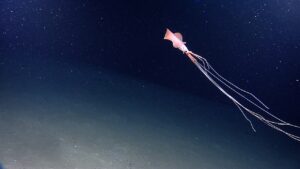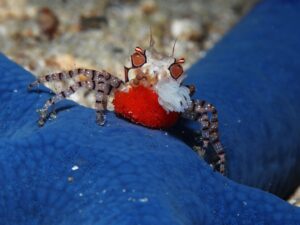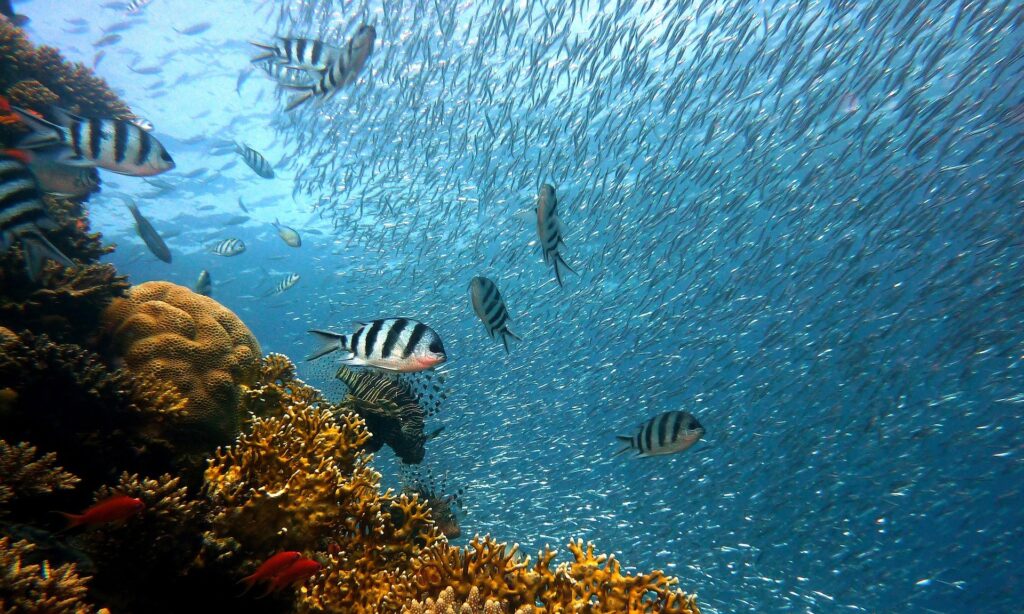We’re celebrating World Oceans Day (June 7)! Did you know that, technically, the Ocean is a single body of water? We, however, divide the Global Ocean into five major oceans: The Arctic Ocean is both smallest and shallowest; the Southern Ocean is the coldest; the Pacific Ocean is by far the largest and deepest; and, finally, we have the Atlantic and Indian Oceans. There are more than 230,000 creatures – that we know of – living in these vast waters.
Arctic Ocean and the Arctic Cod
At only 5,430,000 mi², the ocean around the North Pole is the smallest designated ocean in the world. Most of this ocean is actually covered by ice, which has been decreasing in the last decades due to global warming.
Did you know there is a fish that can live inside the ice pack? That is the arctic, or polar cod. The most unique thing about this fish is the glycoprotein in its blood, which acts as a sort of antifreeze and allows it to survive sub-zero temperatures. They hide among nooks and crannies in the ice then come together in enormous schools in the open to feed on zooplankton. A vital link in the arctic food chain, they in turn are a major food source for marine animals such seals, narwhals, and belugas, as well as seabirds.
Want to Know More?
Check out this article from Ocean Conservancy!
Blue Whales in the Southern Ocean
Only recently designated (it only began appearing in maps after the year 2000), the Southern Ocean surrounds Antarctica. This ocean contains the ACC, the Antarctic Circumpolar Current, the longest and deepest-reaching current in the world. This current gives the Southern Ocean some of the world’s most productive ecosystems.

Virtually all the wildlife we associate with Antarctica, from tiny krill to the massive Antarctic blue whale, rely on the ocean and ice for their survival.
Long and sleek, the largest creature ever to live on Earth is the blue whale. While these majestic creatures can actually be found in all oceans save the Arctic, those in the Southern Ocean are the largest of all, reaching up to 110 feet long. They are also one of the loudest animals, with songs that can be heard by other whales up to 1,000 miles away. Many migrate, and in the Southern Ocean spend time near the ice during the summer months.[1] An important whaling target, blue whales remain listed as Near Threatened today.[2]
Pacific Ocean and the Ocean’s Boneyard
Spanning nearly 1/3 of the planet (63,800,000 mi²), the Pacific Ocean is bigger than all of Earth’s landmasses combined and contains the Mariana Trench, the deepest place on Earth, which is more than 36,000 feet deep.[3]
There are many fascinating and unique creatures that live in the depths, few more so than “zombie worms.” Their Latin name, Osedax or “bone-eater,” is more appropriate, as they feast on the fallen bones of whales – or whatever. Only discovered in 2002, these 1-3” worms secrete acid from their skin to dissolve bones and release the fats and proteins inside. Osedax worms remain mysterious, as they have no mouth or stomach; symbiotic bacteria digest the released nutrients, and how those nutrients are transferred to the worm … no one really knows. But, whether in your garden at home or in the depths of the ocean, it is true that even the most magnificent of beasts is food for worms in the end.
Want to Know More?
Check out this Smithsonian article!
Tentacles in the Atlantic
Named after the titan of ancient Greek mythology, Atlas (or, if you prefer, the lost continent of Atlantis, also named for Atlas), the Atlantic Ocean is the saltiest ocean in the world. It also contains the most famous part of the largest mountain range in the world, the Mid-Ocean Ridge.

A range of undersea mountains, volcanoes,[4] and hydrothermal vents 10,000 miles or so long is known as the Mid-Atlantic Ridge, and its discovery helped prove the theory of continental drift. In spite of the utter lack of sunlight and extreme pressures, it is home to an array of unique sea creatures that live off the energy of volcanic and hydrothermal heat.[5] One such deep sea dweller is the Bigfin Squid. They can get up to 21 feet long, and 20 of those feet are their uniquely bent arms and tentacles with microscopic suckers that are (probably) used for grabbing pray as they drag their long limbs along the floors of ocean ridge canyons.
Want to See One in Action?
Check out This Video from NOAA Ocean Exploration!
Crabs and Corals in the Indian Ocean

Did you know that the Indian Ocean is the world’s warmest ocean? Global warming is a particular threat here, as temperatures increase more rapidly in these already-warm waters. The shores and coastal waters of the western part of this ocean is incredibly diverse, with an estimated 11-20,000 marine species. In fact, there some 300 species of corals alone![6]
One species that scuttles around the tropical reefs bordering the Indian and Pacific oceans is colloquially known as the pom-pom or boxer crab. Whether cheerleading or boxing, these small, 1” crabs have unique symbiotic relationships with various types of anemones – or other corals and sponges – found about the reefs. When threatened, they wave a pair of anemones about in their claws, threatening predators with the anemones’ stingers. This also helps the anemones catch food in their tentacles.[7] Go, crab, go!
Want to Know More About the Earth’s Oceans?
Check out UNESCO’s Ocean Literacy Portal!
[1] https://www.fisheries.noaa.gov/species/blue-whale
[2] https://www.iucnredlist.org/species/2477/221061186
[3] https://oceanexplorer.noaa.gov/facts/pacific-size.html
[4] https://oceanexplorer.noaa.gov/facts/mid-ocean-ridge.html
[5] https://oceanexplorer.noaa.gov/explorations/05galapagos/background/mid_ocean_ridge/mid_ocean_ridge.html
[6] https://wwf.panda.org/wwf_news/?334171/Importance-of-the-marine-biodiversity-of-the-Western-Indian-Ocean
[7] https://scuba-do.com/article/8-facts-about-the-pom-pom-crab/#:~:text=The%20Pom-Pom%20Crab%2C%20scientifically%20known%20as%20Lybia%20tessellata%2C,anemones%20armed%20with%20stinging%20cells%20to%20deter%20predators.
